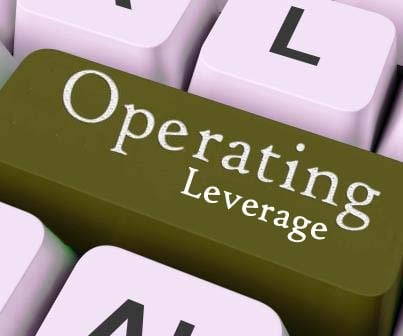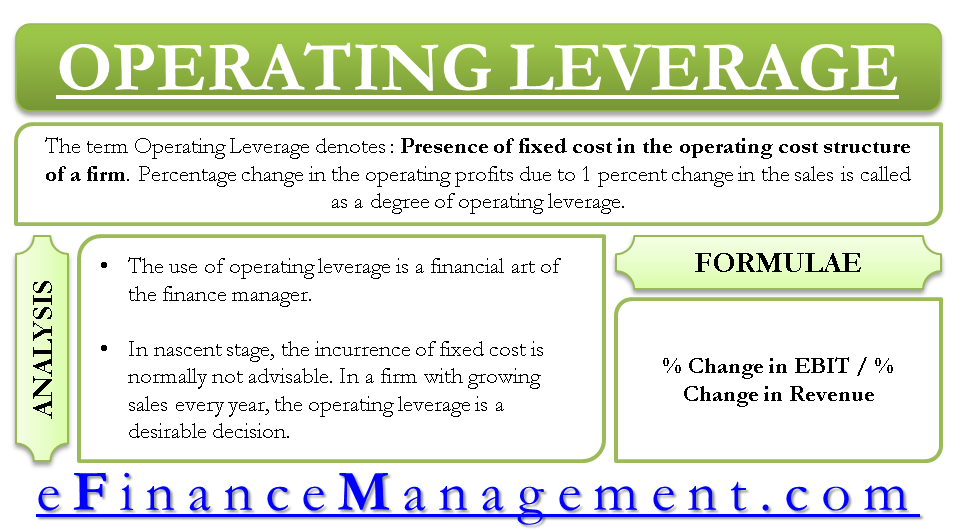Operating leverage is the term used to denote the presence of fixed costs in the operating cost structure of a firm. It is a measure of the magnification effect of fixed costs on operating profits or PBIT. The term ‘degree of operating leverage’ is used synonymously, which is defined as the change in operating profits due to a unit change in the level of revenues.
Operating leverage deals with the investment in fixed costs and their effect on the operating profits. When a firm invests in fixed expenses, the increase in the level of revenue does not increase the fixed expenses. Therefore the additional increase in the revenue directly triggers an increase in the operating profits.

Pretty well, we can now see that the decision related to creating operating leverage (OL) is a very important decision for a business as it directly impacts the operating profit, which is the direct link to shareholders’ wealth maximization. It is said that we cannot improve or implement anything till we do not measure it.
A Measure of Operating Leverage / Degree of Operating Leverage:
Measurement of the effect of operating leverage is commonly known as the degree of operating leverage (DOL). A percentage change in the operating profits due to a 1 percent change in sales is called a DOL.
Formula
| % change in EBIT (Operating Profits) | ||
| The Degree of Operating Leverage (DOL) | = | —————————— |
| % change in Revenue / Sales |
What is the meaning of DOL say it is 3? In a layman’s language, if DOL is 3, an increase in sales by 10% will increase the EBIT by 30% (3*10%). The other side of this is also true. If the sales decline by 10%, the EBIT will decrease by 30%.
Illustration
| Pessimistic | Current | Optimistic | |
| Particulars | Amt. | Amt. | Amt. |
| % Change in Sales | -50% | 50% | |
| Sales | 1000 | 2000 | 3000 |
| Variable Costs | 500 | 1000 | 1500 |
| Contribution | 500 | 1000 | 1500 |
| Fixed Costs | 1000 | 1000 | 1000 |
| EBIT | -500 | 0 | 500 |
| % Change in EBIT | -100% | 100% | |
| DOL | 2 |
Let us get more clarification with the help of the above example. In the example, the current situation suggests a fixed cost amounting to 1000, which will not change under pessimistic and optimistic conditions. The impact of having that operating leverage is explained by ‘% Change in EBIT.’ We can see that the degree of OL is 2. When the sales are going down by 50%, the EBIT is going down by 100%, and the same situation exists for the optimistic situation.

Interpretation and Application
If the operating leverage is more than one, then the firm can be said to be operationally leveraged. And, if the OLE is one, it means all the costs are variable, and any drop or rise in sales will have a proportional impact on the operating income.
For a business, operating leverage is a tool to lever a business to the next level. The use of this leverage is a financial art of the finance manager. It is a very critical decision and has to be taken with utmost caution as we know it is like a two-edged sword. The manager has to look at the stage of the business. In the nascent stage, the incurrence of fixed costs is normally not advisable. This leverage is a desirable decision in a firm with growing sales every year. Why? We can see the impact in the above illustration.
Read more about Leverage and its Other Types.

